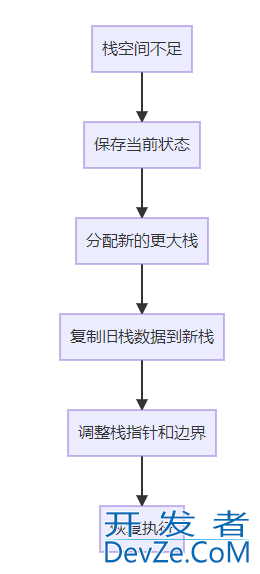Springboot+MongoDB的五种操作方式
目录
- 一、maven中添加依赖
- 二、配置文件中添加连接
- 三、创建MongoDB文档对应的实体类
- 四、操作MongoDB数据库
- 4.1 MongoTemplate
- 4.2 MongoRepository
- 4.3 ReactiveMongoTemplate
- 4.4 ReactiveMongoRepository
- 4.5 原生 MongoDB Java 驱动
- 五、主要区别对比
- 六、选择建议
一、maven中添加依赖
<dependency> <groupId>org.springframework.boot</groupId> <artifactId>spring-boot-starter-data-mongodb</artifactId> </dependency>
二、配置文件中添加连接
spring:
mongodb:
host: 192.168.56.10
port: 27017
database: share #指定操作的数据库
三、创建mongodb文档对应的实体类
@phpData
@Schema(description = "站点位置")
public class StationLocation
{
@Schema(description = "id")
@Id
private String id;
@Schema(description = "站点id")
private Long stationId;
@Schema(description = "经纬度")
private GeojsonPoint location;
@Schema(description = "创建时间")
private Date createTime;
}
四、操作MongoDB数据库
Springboot提供了5种操作MongoDB的方式,下面简单介绍下它们的使用方法:
4.1 MongoTemplate
特点:
- 是 Spring Data MongoDB 提供的核心模板类
- 提供丰富的 CRUD 操作方法
- 支持复杂的查询和聚合操作
- 需要手动编写查询逻辑
示例代码:
查询:
import org.springframework.data.geo.Circle;
import org.springframework.data.geo.Distance;
import org.springframework.data.geo.Metrics;
import org.springframework.data.mongodb.core.MongoTemplate;
import org.springframework.data.mongodb.core.geo.GeoJsonPoint;
import org.springframework.data.mongodb.core.query.Criteria;
import org.springframework.data.mongodb.core.query.Query;
// 注入
@Autowired
private MongoTempla编程客栈te mongoTemplate;
// 调用mongoTemplate,查询周边数据
// 查询指定经纬度附近的站点
public List<StationLocation> nearbyStation(String latitude, String longitude) {
//确定中心点,根据经纬度获取站点信息
GeoJsonPoint point = new GeoJsonPoint(Double.parseDouble(longitude), Double.parseDouble(latitude));
//设置查询半径,查询站点周边50公里范围的信息
Distance distance = new Distance(50, Metrics.KILOMETERS);
//画圆 确定查询范围
Circle circle = new Circle(point, distance);
//查询MongoDB数据库中站点信息
Query query = new Query(Criteria.where("location").withinSphere(circle));
List<StationLocation> stations = mongoTemplate.find(query, StationLocation.class);
}
4.2 MongoRepository
特点:
- 基于 JPA 风格的 Repository 接口
- 支持方法名自动生成查询
- 提供基本的 CRUD 操作
- 可通过注解扩展自定义查询
- 适合简单的 CRUD 操作
示例代码:
创建Repository的接口
//StationLocation为要查询的文档对应的实体类,String为实体类StationLocation主键的类型
public interface StationLocationRepository extends MongoRepository<StationLocation, String> {
//方法要规范命名,mongodb才能按图索骥找到对应的数据
StationLocation getByStationId(Long id);
}
调用上面定义的Repository新增插入数据:
@Autowired
private StationLocationRepository stationLocationRepository;
public int saveStation(Station station) {
String provinceName = regionService.getNameByCode(station.getProvinceCode());
String cityName = regionService.getNameByCode(station.getCityCode());
String districtName = regionService.getNameByCode(station.getDistrictCode());
station.setFullAddress(provinceName + cityName + districtName + station.getAddress());
int rows = stationMapper.insert(station);
StationLocation stationLocation = new StationLocation();
stationLocation.setId(ObjectId.get().toString());
stationLocation.setStationId(station.getId());
stationLocation.setLocation(new GeoJsonPoint(station.getLongitude().doubleValue(), station.getLatitude().doubleValue()));
stationLocation.setCreateTime(new Date());
stationLocationRepository.save(stationLocation);
return rows;
}
修改数据
@Autowired
private StationLocationRepository stationLocationRepository;
public int updateStation(Station station) {
StationLocation stationLocation = stationLocationRepository.getByStationId(station.getId());
stationLocation.setLocation(new GeoJsonPoint(station.getLongitude().doubleValue(), station.getLatitude().doubleValue()));
stationLocationRepository.save(stationLocation);
return rows;
}
4.3 ReactiveMongoTemplate
特点:
- 响应式编程模型的 MongoTemplate
- 返回 Mono 或 Flux 类型
- 适合非阻塞、异步应用
- 需要 Spring WebFlux 环境
示例代码:
@Autowired
private ReactiveMongoTemplate reactiveMongoTemplate;
public Mono<User> findUserById(String id) {
return reactiveMongoTemplate.findById(id, User.class);
}
4.4 ReactiveMongoRepository
特点:
- 响应式版本的 MongoRepository
- 返回 Publisher 类型 (Mono/Flux)
- 支持响应式流处理
- 适合全栈响应式应用
示例代码:
// 创建ReactiveRepository
public interface UserReactiveRepository extends ReactiveMongoRepository<User, String> {
Flux<User> fi编程客栈ndByName(String name);
}
// 使用
@Autowired
private UserReactiveRepository userReactiveRepository;
4.5 原生 MongoDB Java 驱动
特点:
- 直接使用 MongoDB 官方 Java 驱动
- 不依赖 Spring Data 抽象层
- 最灵活但也最底层
- 需编程客栈要手动处理更多细节
示例代码:
@Autowired
private MongoClient mongoClient;
public void insertUser(User user) {
MongoDatabase database = mongoClient.getDatabase("test");
MongoCollection<Document> collection = database.getCollection("users");
collection.insertOne(new Document("name", user.getName())
.append("age", user.getAge()))python;
}
五、主要区别对比
| 方式 | 编程模型 | 抽象级别 | 适用场景 | 学习曲线 |
|---|---|---|---|---|
| MongoTemplate | 命令式 | 中等 | 复杂查询/操作 | 中等 |
| MongoRepository | 命令式 | 高 | 简单 CRUD | 低 |
| ReactiveMongoTemplate | 响应式 | 中等 | 响应式复杂操作 | 较高 |
| ReactiveMongoRepository | 响应式 | 高 | 响应式简单 CRUD | 中等 |
| 原生驱动 | 命令式 | 低 | 需要直接控制 | 高 |
六、选择建议
- 简单 CRUD:优先考虑 MongoRepository/ReactiveMongoRepository
- 复杂查询/聚合:使用 MongoTemplate/ReactiveMongoTemplate
- 响应式应用:选择 Reactive 版本
- 需要直接控制底层:使用原生驱动。
到此这篇关于Springboot+MongoDB简单使用示例的文章就介绍到这了,更多相关Springboot MongoDB使用内容请搜索编程客栈(www.devze.com)以前的文章或继续浏览下面的相关文章希望大家以后多多支持编程客栈(www.devze.com)!






 加载中,请稍侯......
加载中,请稍侯......
精彩评论